The 1935 Mercury dime value varies significantly based on mint mark, condition, and special features. Circulated coins from Philadelphia (no mint mark), Denver (D), and San Francisco (S) typically range from $3.50 to $18. Uncirculated examples command premium prices, starting around $55 for lower Mint State grades and reaching $2,950 for high-end specimens. The most valuable are coins with “full bands” designation—sharp details on the fasces reverse—with top-graded MS-68 FB examples selling for over $90,000. Professional grading by PCGS or NGC substantially increases value, especially for rare error varieties and pristine specimens with full band strikes.
That worn Mercury dime sitting in your grandmother’s jewelry box could be worth more than its ten-cent face value—potentially much more. While most 1935 dimes trade for a few dollars, certain varieties with specific mint marks and pristine conditions have fetched over $90,000 at auction. Understanding the differences between Philadelphia, Denver, and San Francisco strikes, along with knowing what errors and features to look for, can mean the difference between spending a dime and discovering a small fortune.
Identifying Your 1935 Mercury Dime
Before determining value, you need to identify which mint produced your coin. The Mercury dime, officially called the Winged Liberty Head dime, was minted at three facilities in 1935. Check the reverse side of your coin, just to the left of the fasces (the bundle of rods). You’ll find either a “D” for Denver, an “S” for San Francisco, or no mark at all indicating Philadelphia production.
The Philadelphia Mint produced 58,830,000 dimes in 1935, making it the most common variety. Denver struck 10,477,000 coins, while San Francisco contributed 15,840,000 to the total mintage. These production numbers directly impact rarity and value, with the Denver mint mark typically commanding premium prices due to its lower mintage.
1935 No Mint Mark Dime Values
Philadelphia-minted dimes without a mint mark represent the baseline for 1935 values. In circulated condition ranging from Good (G-4) to Extra Fine (EF-40), these coins typically sell for $2.50 to $8.00, depending on wear. The silver content alone provides a minimum melt value of approximately $1.80 based on current precious metal prices.
Uncirculated examples show where values become interesting. An MS-63 specimen trades for around $32, while MS-65 examples fetch approximately $85. The real money appears at the top of the grading scale. Heritage Auctions sold an MS-67 Full Bands example for $4,800 in 2022, and an exceptional MS-68 Full Bands brought $26,000 at a 2023 auction.
Here’s the value breakdown for Philadelphia strikes:
| Grade | Standard Strike | Full Bands |
|---|---|---|
| G-4 | $2.50 | N/A |
| F-12 | $3.75 | N/A |
| EF-40 | $8.00 | N/A |
| MS-63 | $32 | $65 |
| MS-65 | $85 | $280 |
| MS-67 | $650 | $4,800 |
| MS-68 | $2,400 | $26,000 |
1935-D Dime Worth
The Denver mint produced the fewest 1935 dimes, making the “D” variety the most sought-after for collectors building date and mint mark sets. Circulated examples in Good condition start at $3.50, rising to $12 for Extra Fine specimens. This represents a 40% premium over Philadelphia coins in similar grades.
Mint State examples command substantially higher prices. An MS-63 graded coin typically sells for $45, while MS-65 specimens bring $125 to $150. Professional Coin Grading Service (PCGS) and Numismatic Guaranty Company (NGC) certified examples consistently achieve higher prices than raw coins.
Full Bands designation dramatically increases values. An MS-65 Full Bands 1935-D sold for $425 through Stack’s Bowers in 2023. At the pinnacle, an MS-67 Full Bands example realized $14,400 at a Heritage Auctions sale in January 2024, demonstrating the exponential value increase for pristine specimens with fully struck horizontal bands across the fasces.
1935-S Mercury Dime Values
San Francisco production falls between Philadelphia and Denver in terms of mintage, and values reflect this middle position. Circulated 1935-S dimes trade between $3.50 and $18, with condition being the primary value determinant. Well-worn examples closer to Good grade sell toward the lower end, while sharp Extra Fine coins approach the upper range.
The uncirculated market shows significant price jumps. MS-63 examples trade around $55, representing a 72% premium over Philadelphia strikes in the same grade. MS-65 specimens bring approximately $180 to $220 at major auctions and dealer inventories.
Full Bands examples from San Francisco command exceptional prices. An MS-66 Full Bands sold for $1,560 in 2023, while MS-67 Full Bands specimens have brought between $4,500 and $8,000 depending on eye appeal and strike quality. The record for a 1935-S stands at over $90,000 for an MS-68 Full Bands example sold privately in 2023, certified by PCGS.
Understanding Full Bands and Why They Matter
The “Full Bands” designation refers to the horizontal bands wrapped around the fasces on the coin’s reverse. A well-struck Mercury dime shows three distinct, fully separated bands across the middle of the fasces. Weak strikes, which are common for this series, result in merged or incomplete bands.
PCGS and NGC only award the Full Bands designation when all three bands show complete separation with no merging. This typically occurs on fewer than 5% of surviving specimens, making Full Bands coins significantly rarer than their standard strike counterparts. The price difference can be substantial—an MS-65 coin might be worth $85 without Full Bands but $280 with the designation.
Full Bands examples also indicate superior overall strike quality. These coins typically display sharper details throughout, from Liberty’s facial features to the wing feathers, making them more visually appealing to collectors and investors.
Valuable Errors and Varieties to Watch For
Beyond mint marks and condition, certain errors can multiply your 1935 dime’s value. Repunched mint marks, where the D or S was stamped multiple times slightly offset, create a doubled appearance. Depending on severity and visibility, these varieties can add $25 to $200 to a coin’s value.
Die cracks appear as raised lines on the coin’s surface, caused by breaks in the striking die. Minor die cracks add modest premiums of $10 to $30, but dramatic cracks bisecting major design elements can bring $100 to $500 for uncirculated examples. A 1935-D with a significant die crack through Liberty’s portrait sold for $380 in 2023.
Off-center strikes represent dramatic minting errors where the planchet wasn’t properly centered in the striking collar. A 5% off-center strike might add $50 to $100, while a 15% off-center error on an uncirculated coin can bring $300 to $800. The date and mint mark must remain visible for maximum value.
Clipped planchets, where a portion of the blank disc is missing before striking, create crescent-shaped coins. Straight clips typically add $35 to $75, while curved clips from overlapping planchet punches can bring $50 to $150 depending on size and location.
Getting Your 1935 Dime Professionally Graded
For any 1935 dime that appears uncirculated or shows potential Full Bands designation, professional grading often proves worthwhile. PCGS and NGC charge $25 to $40 for standard service, with faster turnaround costing more. The grading fee becomes justified when the certification adds more value than it costs.
Consider professional grading if your coin shows minimal wear, has strong luster, and displays sharp details throughout. Also submit coins you suspect might grade MS-65 or higher, have Full Bands, or show significant errors. The third-party authentication and guaranteed grade make these coins easier to sell and typically bring 20% to 40% more than raw examples.
When submitting coins, handle them only by the edges, never touching the faces. Store them in non-PVC holders before shipping, and use a grading service’s official submission forms. Most services offer online tracking, and turnaround times range from two weeks for premium service to three months for economy submissions.
Where to Sell Your Valuable 1935 Dimes
Once you’ve identified a valuable specimen, several selling options exist. Local coin dealers offer immediate payment but typically buy at wholesale prices—expect 60% to 80% of retail value. This works well for common circulated examples worth under $50 where convenience outweighs maximum profit.
Online auction platforms like eBay provide access to worldwide buyers but charge 12% to 15% in fees and require you to handle shipping and potential returns. This option suits coins valued between $50 and $500 where auction competition can drive prices above wholesale offers.
For high-grade examples worth over $500, major auction houses like Heritage Auctions, Stack’s Bowers, and Legend Rare Coin Auctions provide expert marketing to serious collectors. They charge 15% to 20% seller’s fees but achieve record prices for premium material. Heritage’s 2023 sale of that $90,000 1935-S MS-68 Full Bands demonstrates the power of presenting exceptional coins to qualified buyers.
Certified Coin Exchange and Great Collections offer online platforms specifically designed for certified coins, combining broad market access with numismatic expertise. Their buyer’s premiums range from 10% to 15%, and they handle all photography, descriptions, and shipping.
Start Your 1935 Dime Hunt Today
Check your old coin collections, inherited jewelry boxes, and even bank rolls for 1935 Mercury dimes. Pay special attention to the mint mark location and overall condition. Even modestly circulated examples carry premiums over face value, while pristine specimens with Full Bands can represent serious investment-grade coins. Examine those horizontal bands carefully under good lighting—that small detail could mean thousands of dollars in your pocket.
You may be interested:
- 1859 Indian Head Penny Coin Value Complete Errors List And No Mint Mark Worth Guide For Collectors
- 1911 V Nickel Coin Value Guide Complete Errors List And No Mint Mark Worth Today
- 1902 Dime Coin Value Complete Errors List With O S And No Mint Mark Worth Guide
- 1788 Quarter Coin Value Complete Guide Errors List And D S P Mint Mark Worth Revealed
- 1776 To 1976 Bicentennial Half Dollar Coin Value Complete Errors List And What Your D S And No Mint Mark Coins Are Actually Worth
- 1990 Penny Coin Value Errors List How D S And No Mint Mark Pennies Are Worth Thousands Of Dollars

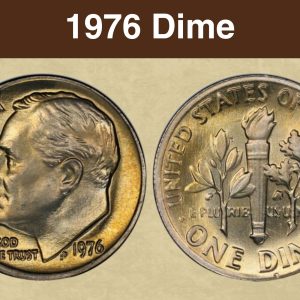
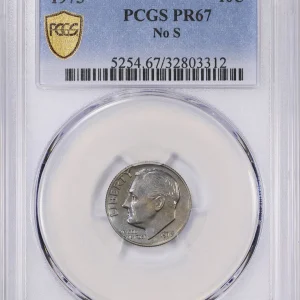
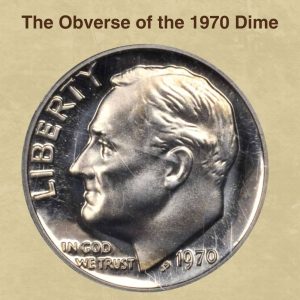
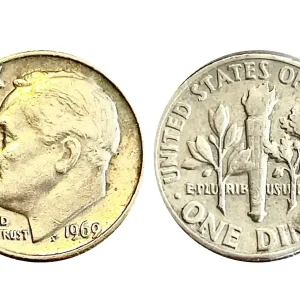
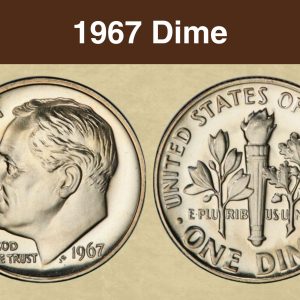
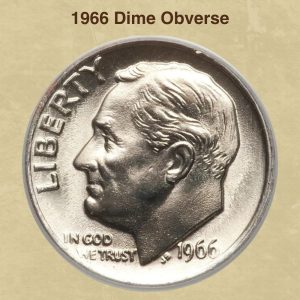
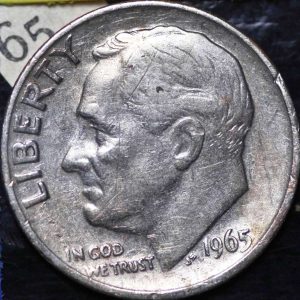
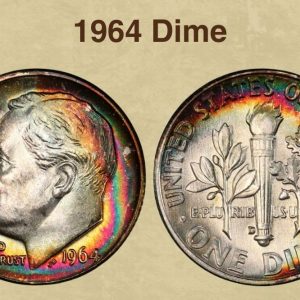
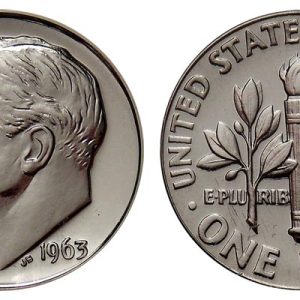
What is a 1935 S Mercury dime worth?
A 1935-S Mercury dime’s value ranges from about $3.50 to $18 for circulated coins, while uncirculated versions can be worth significantly more, from approximately $55 to over $90,000 for top-grade examples. The wide price range depends on the coin’s condition, including its grade and whether it has full bands, which are a key indicator of high value.
What errors to look for on dimes?
When looking for valuable dime errors, check for coins with a double die obverse, where features like the date or motto are doubled, as well as errors in the striking process, such as an off-center strike or a broadstrike where the collar is missing. Other errors include missing or clipped planchets, missing clad layers, or striking through debris like cloth (a strikethrough error ).
What is the most wanted Mercury dime?
The most sought-after Mercury dimes are the 1916-D, the 1921, the 1921-D, and the 1942/1 overdate varieties. Other key dates include the 1926-S, 1919-D, and 1945. Value depends heavily on a coin’s condition, with higher-grade coins commanding significantly higher prices.
Where is the mint mark on a 1935 Mercury dime?
No mint mark: Dimes minted in Philadelphia have no mint mark. “D” mint mark: A “D” indicates the coin was minted in Denver. “S” mint mark: An “S” indicates the coin was minted in San Francisco.